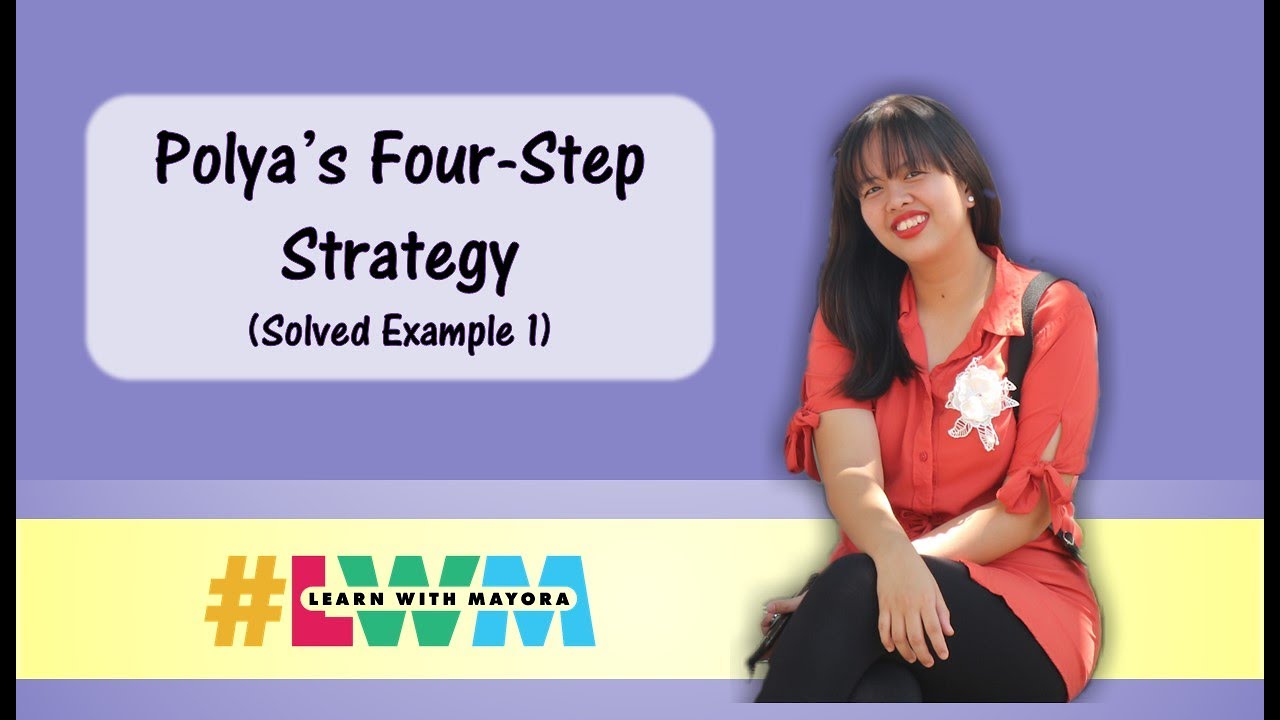Polya's Four Steps in Problem Solving (1.3)
Summary
TLDRIn this video, Professor Monty explains Polya's four-step problem-solving method: understanding the problem, devising a plan, carrying out the plan, and reviewing the solution. He demonstrates this method using a practical example of comparing the cost-effectiveness of two products—a jar of honey and a showerhead—by calculating their cost per ounce. He highlights the importance of reviewing the solution to ensure it makes sense and concludes by discussing how smaller quantities can sometimes offer a better deal. The video encourages viewers to explore more lessons in various math topics.
Takeaways
- 🧠 Understand the problem: The first step is to comprehend what the problem is asking, often by rereading it and focusing on the last sentence.
- 📝 Devise a plan: Identify patterns or necessary information and decide how to approach the problem.
- 🔧 Carry out the plan: Solve the problem based on the devised method.
- 🔍 Review your solution: After solving, check the answer to ensure it makes sense and correct any errors if necessary.
- 🍯 Example problem: Compare two products—a jar of honey and a showerhead—to determine the better deal based on cost per ounce.
- 📊 Method of calculation: The plan involves calculating cost per ounce by dividing the price by the number of ounces for each product.
- 💸 Honey calculation: The 8-ounce jar of honey costing $2.19 results in about 27 cents per ounce.
- 🚿 Showerhead calculation: The 12-ounce showerhead costing $3.75 results in about 31 cents per ounce.
- ✅ Conclusion: The 8-ounce jar of honey is the better deal, being cheaper per ounce.
- 🤔 Surprising result: Although larger quantities usually cost less per unit, in this case, the smaller jar offers the better value.
Q & A
What are Polya's four steps in problem solving?
-Polya's four steps in problem solving are: 1) Understand the problem, 2) Devise a plan, 3) Carry out the plan, and 4) Look back and check the solution.
What should you do if you don’t understand the problem at first?
-If you don't understand the problem at first, it's important to reread the problem, identify the key question, and focus on understanding what is being asked.
How can you devise a plan to solve a problem according to Polya’s method?
-To devise a plan, you should identify relevant patterns, understand what information is needed, and determine the steps or approach you will use to solve the problem.
What is the example problem used in the script?
-The example problem in the script is determining which is a better deal between an 8-ounce jar of honey for $2.19 and a 12-ounce jar for $3.75.
How does the speaker devise a plan to solve the example problem?
-The speaker's plan is to calculate the cost per ounce for both options by dividing the price by the number of ounces, and then compare the two values.
What is the calculated cost per ounce for the 8-ounce jar of honey?
-The cost per ounce for the 8-ounce jar of honey is approximately $0.27 or 27 cents per ounce.
What is the calculated cost per ounce for the 12-ounce jar of honey?
-The cost per ounce for the 12-ounce jar of honey is approximately $0.31 or 31 cents per ounce.
Which jar of honey is the better deal, and why?
-The 8-ounce jar of honey is the better deal because it costs 27 cents per ounce, which is cheaper than the 12-ounce jar, which costs 31 cents per ounce.
Why might the result of the problem be surprising according to the speaker?
-The result might be surprising because people generally expect a volume discount, meaning the larger jar should be cheaper per ounce. However, in this case, the smaller jar is actually cheaper.
What does the speaker recommend doing after solving the problem?
-The speaker recommends looking back at the solution to ensure it makes sense, checking for any errors, and confirming whether the answer is reasonable.
Outlines

Этот раздел доступен только подписчикам платных тарифов. Пожалуйста, перейдите на платный тариф для доступа.
Перейти на платный тарифMindmap

Этот раздел доступен только подписчикам платных тарифов. Пожалуйста, перейдите на платный тариф для доступа.
Перейти на платный тарифKeywords

Этот раздел доступен только подписчикам платных тарифов. Пожалуйста, перейдите на платный тариф для доступа.
Перейти на платный тарифHighlights

Этот раздел доступен только подписчикам платных тарифов. Пожалуйста, перейдите на платный тариф для доступа.
Перейти на платный тарифTranscripts

Этот раздел доступен только подписчикам платных тарифов. Пожалуйста, перейдите на платный тариф для доступа.
Перейти на платный тарифПосмотреть больше похожих видео
5.0 / 5 (0 votes)






